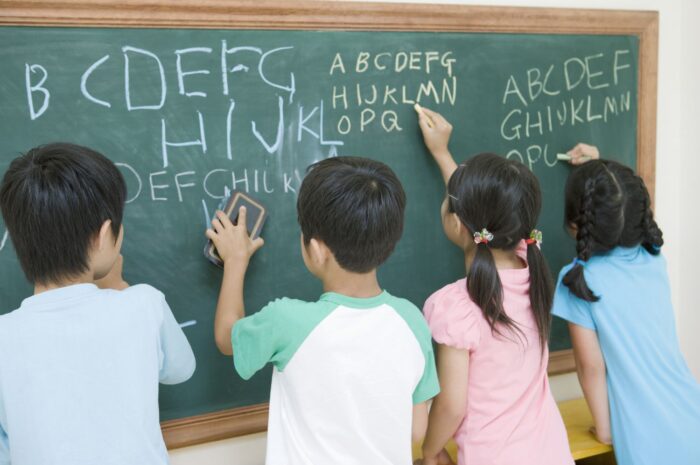Are you here to know how English is taught in Japanese schools? Here’s a straight answer. The language is taught in Japanese schools using the grammar-translation method.
This method is focused on memorizing grammar rules and translating passages between English and Japanese. This means there is more emphasis on reading and writing than speaking and listening.
This approach helps students understand written English. However, it doesn’t develop their spoken skills.
Of course, efforts have been made, such as emphasizing speaking, communication, and fun in language learning. However, challenges persist!
Among these challenges, AmazingTalker offers a solution for those seeking to improve their language skills in Japan. In this article, we will explore how the Language is taught in Japanese schools.
English Education in Japanese Schools

Source: japan-forward.com
English education in Japan is mandatory from elementary school through high school and even into university.
Historically, language teaching methods in Japan have evolved, with the traditional grammar-translation method being prominent. This method focuses on grammar and vocabulary. Students are asked to translate between English and Japanese.
However, there has been a shift towards more communicative approaches in recent years. Japan now understands the need to prioritize communication skills.
This shift is driven by the increasing importance of English as a global language and the need for students to be able to effectively communicate in English-speaking environments.
What’s Wrong with English Education in Japan?

Source: thoughtco.com
Here are the key factors that contribute to this issue:
1. Teaching to the Tests
Teachers primarily gear their instruction towards exam preparation, such as the “Center Test”. And this lacks a communicative aspect.
About 89% of universities use this test. It comprises reading and listening sections with multiple-choice questions.
This focus on standardized tests leads to an overemphasis on grammar and vocabulary, rather than on practical communication skills.
Consequently, this approach limits students’ ability to use the language effectively in real-life situations.
2. Lack of Emphasis on Speaking and Listening Skills
The overall English education in Japan inclines to prioritize reading and writing over speaking and listening skills. This is definitely an issue!
Because of this, Japanese students lack practical conversational abilities in the language.
3. Quality of Teaching
Teachers in Japan often lack proficiency in spoken English themselves. So, classes are mostly conducted in Japanese.
While they can teach grammar rules necessary for exams, they struggle to engage in meaningful conversations. They also lack pronunciation skills.
So, students are taught about the language rather than how to use it.
4. Low Exposure to the Language

Source: blog.ejoy-english.com
In Japan, Students have limited or zero exposure to the language outside the classroom. That’s a reason for the lack of engagement and interest in the language.
This limited exposure hampers their ability to develop fluency and proficiency.
Unfortunately, these challenges are further pronounced in elementary schools. A shortage of specialized teachers results in homeroom teachers. This means that inadequately trained teachers take on teaching responsibilities.
This reliance on untrained teachers or Assistant Language Teachers (ALTs) disturbs a student’s overall understanding of the language.
How is Japan Improving the Language Learning for Japanese Students?
Many significant changes have been made in this regard over the past decade.
The Ministry of Education, Culture, Sports, Science, and Technology has enforced an English Language Education Reform Plan.
This plan aims to improve students’ communication skills in English. It was introduced by recognizing the changing needs of the country and the increasing importance of the language as a global language.
The 2020 Olympics has also impacted English education reforms, with a focus on practical reading and writing abilities. As well as the adoption of English familiarization syllabi from the third grade.
The “Hi Friends” textbook is another popular resource used in Japanese schools to teach the language. It emphasizes communicative activities and real-life language use.
The “Foreign Language Activities” subject is a new addition to the curriculum. This aims to improve students’ language skills through practical activities and real-life scenarios.
Starting in 2020, the number of hours studying the language has also increased. Foreign Language Activities became compulsory for the third and fourth grades. with 35 hours of teaching per year. One lesson per week.
Moreover, the language is taught as a formally assessed subject to fifth and sixth graders for 70 hours per year. Two lessons per week.
The introduction of Audio Comprehension Tests and initiatives like the Japan Exchange and Teaching (JET) Program also aim to enhance English education in Japan.
Why Does English Teaching in Japan Not Improve?

Source: blog.gaijinpot.com
Despite the efforts, the desired improvements are not being realized.
Teachers face numerous challenges, including:
- Large class sizes
- Student passivity
- Low student motivation
- Limited language proficiency
- Poor critical thinking skills
- Unsupportive colleagues
- Difficult-to-use ministry-approved textbooks
Additionally, many teachers lack the necessary skills to teach the curriculum effectively. They don’t have the training to teach English through English. Sometimes, they’re unable to integrate grammar teaching with communicative tasks.
MEXT is implementing policies to address these issues. Like,
- Stopping the English component of the Center Test from 2023.
- Encouraging universities to accept scores from four-skill certification examinations.
This is hoped to increase the focus on productive skills like speaking and writing in high schools.
However, there’s also a lack of assessment for speaking and communicating in English in Japanese public education. This also makes it difficult for teachers to motivate students.
Bottom Line
So, how English is taught in Japanese schools? Well, not effectively. Many changes have been made to improve language learning in Japan. However, the challenges persist!
It is hoped that these changes will result in a noticeable improvement in Japanese students’ English communicative ability over the next few years.
If you’re someone looking to learn the language in Japan, AmazingTalker offers a perfect solution. They incorporate spoken language activities and create opportunities for you to use English in a practical and interactive way.

